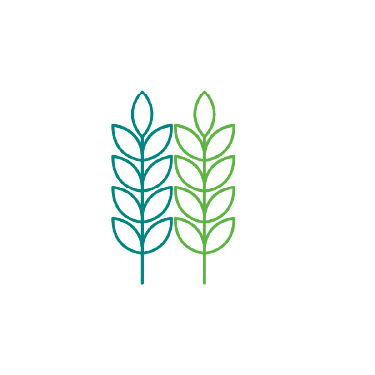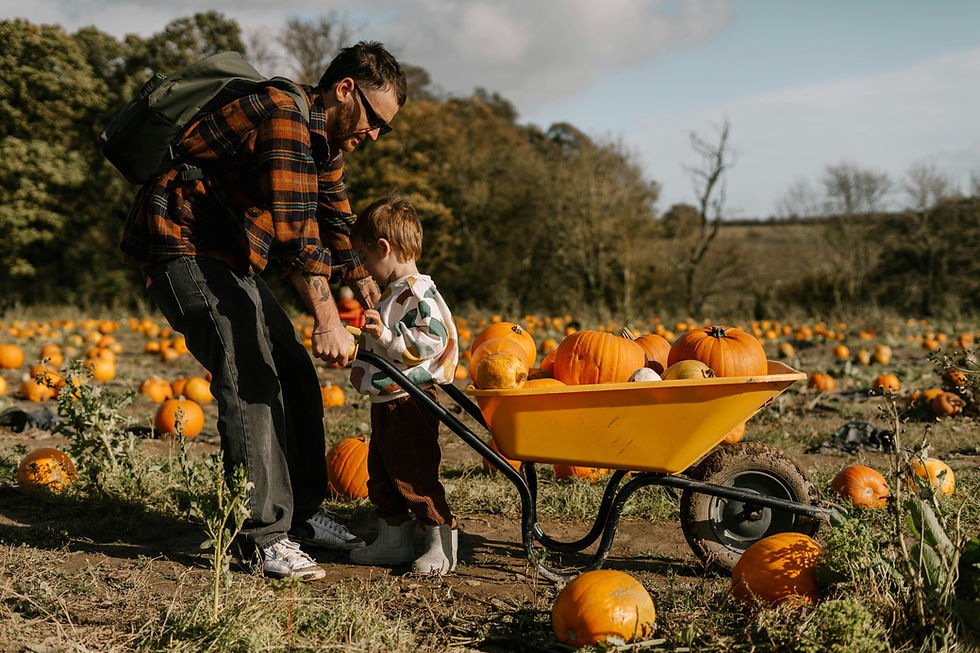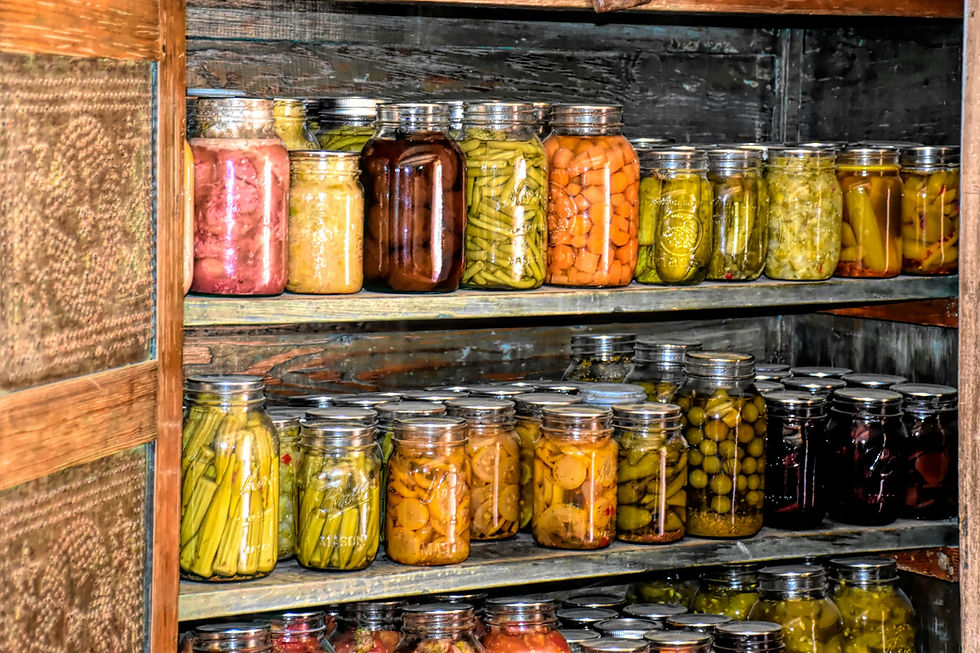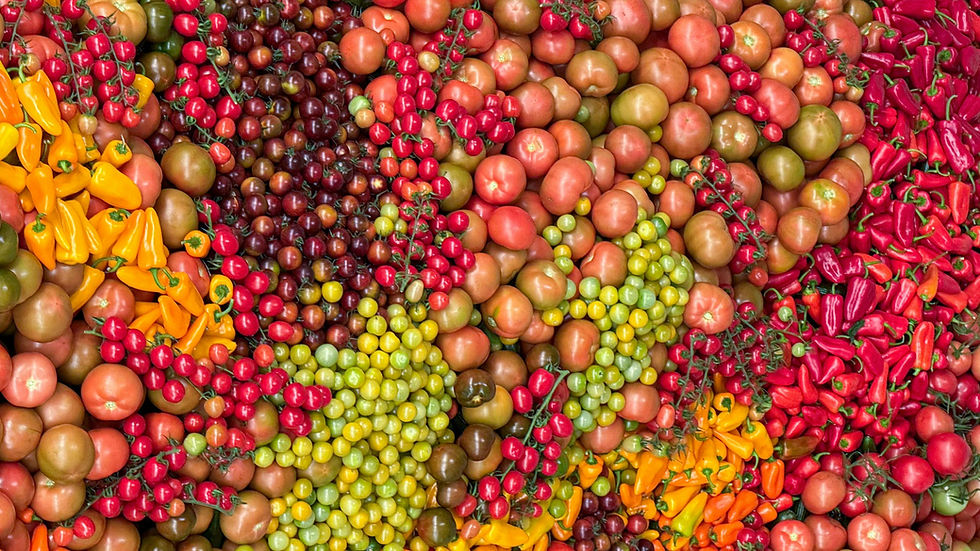The pumpkin: an American icon
- Friends of Sustainable Agriculture

- Oct 30
- 3 min read
It’s the end of October, and there is likely to be a pumpkin sitting on your front porch, signaling the fall festivities. The idea of pumpkin is everywhere, especially represented by the ubiquitous pumpkin spice flavor (spoiler alert: it rarely contains pumpkin, but rather the spices most associated with pumpkin pie).
So, in our vegetable spotlight this week, let’s dive into this very American product and how it became the icon it is today.

New World Bounty
As with tomatoes and beans, pumpkins can really claim their origin in America, as they were here before colonists arrived. Botanically classified as fruits, just like tomatoes, their journey to the table was similar, as well (in case you missed it, go here to read our piece on tomatoes). Both were met with distrust by settlers and exported to Europe as a botanical curiosity from the new world. However, interest in it grew faster than the tomato, as squashes are very easy to grow, provide abundant yields and last in storage, offering sustenance during colder months.
Squash is the word used above because the pumpkin is botanically undistinguishable from gourds and winter and summer squash. Their species is called Cucurbita pepo, and being all the same, they can cross-pollinate, creating varieties of multiple shapes and colors. No wonder around the Thanksgiving celebrations, squashes feature heavily in pictures of cornucopias: their crop is large and varied, a dream of abundance.

Today we hail intercropping—or mixing crops in one single plot—as one of the innovations that can be used to practice regenerative agriculture. The technique, however, is ancient. Native Americans applied it with the trifecta of beans, squash and corn, which is still used by indigenous communities in Mexico, and which takes advantage of three species that grow strong together to provide a steady supply of food and a very complete diet.
A seasonal affair
So, let’s get back to the idea of pumpkin. Far from other squashes with more mundane coloring, the variety we call pumpkin has grown beloved for its aesthetic qualities. Its bright orange hue reminds of fallen leaves, matching other aspects of the fall imagination. Production, then, matches demand, with pumpkin production being highly seasonal. Harvest peaks in September and early October, with demand falling sharply by November; Thanksgiving doesn’t demand fruit, but rather the processed stuff.
USDA data shows that pumpkins are grown in all 50 states, and that fresh-market pumpkins are 85% of all grown, while the remaining 15% go to processing plants and will come out looking like the purée cans your family uses for Thanksgiving pie. The 2024 yield was an estimated 1.9 billion pounds, worth 274 million dollars.
Imagine that! At an average weight of 15 lb. per carving pumpkin, this results in over 107 million individual pumpkins being sold each year during the holiday season. This reflects in a very American tradition, too: that of taking the children directly to the farms to pick up the pumpkins, marking the beginning of the holiday season.

The footprint of arts and crafts
Carving pumpkins to illuminate from the inside comes from a long tradition of Celtic-derived traditions of carving root vegetables, mixed with legends about “jack-o’-lanterns”, mysterious lights seen by travelers in bogs. The association with the “spooky” season was further cemented by Washington Irving’s The Legend of Sleepy Hollow, which revolves around a Headless Horseman who carries his pumpkin head while he rides his horse.
The pumpkin for carving has been selectively bred to have thinner, even skin and fibrous, watery flesh that is easier to scoop out. At the same time, it tends to have a bland taste, which means that cutouts are usually not used. AP News recently reported that more than 1 billion pounds of pumpkin end in American landfills after the fall decorations are taken down. The solutions they propose to avoid them contributing to methane emissions include donating it to local farms (where it can be used to feed the pigs) and composting (make sure to break into small pieces, eliminate decorations and add dry matter to your pile, because pumpkins have high water content).

Do you want to carve a pumpkin with more appetizing insides? Try looking out for “sugar pumpkins”: equally bright orange but often classified as mere ‘winter squash’ due to their smaller size. The harder skin can make it a little harder to carve, especially for children, but you can save the flesh for baking and avoid buying canned purée for your holiday pies.

Did you know? The Cucurbitaceae order also includes cucumbers and melons, which means they are cousins of the pumpkin.
If you enjoyed this and want to read more, join the FSA community by signing up for our newsletter.








Comments